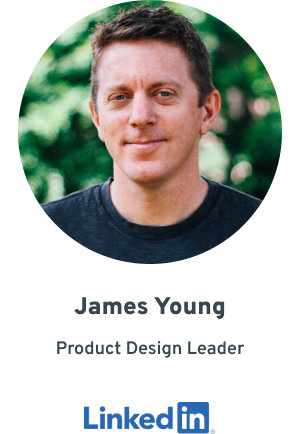
by jydesign | Feb 29, 2020 | Blog, Roundup
Updated January 18, 2021. See this twitter thread for details.
The design services landscape has undoubtedly evolved in the last decade.
Regardless of size or model, there’s been a rich history of graphic design services being a “relationships businesses.” Firms typically became known and trusted for their leadership, teams, and results. Reputation is still a factor today, but the variety of means for engaging with design practitioners continue to expand.
Outside agencies still exist and are now competing with the impulse within some companies to either build or acquire their own internal design teams. Individual freelancers and small boutique shops are looking for ways to specialize in countering these pressures. Freelancer marketplaces have been around for a while and focus on a race to the bottom in affordability.
An even more recent trend is the rise of design service companies that commoditize typical graphic and digital design production services and outputs and wrap them up in a SaaS (software as a service) styled capabilities model that offers predictability of pricing and flexibility of commitment.
The business world loves its acronyms. Perhaps this is model could be known as “On-Demand Design Services (ODDS)” or “Unlimited Design as a Service (UDaaS)” 🤓
What do these companies have in common?
- Emphasis on a tiered fixed-price model, quite similar to SaaS companies
- A contract-less monthly commitment that can be canceled any time
- Ability to increase or decrease the scale of services needed month to month
- They are usually remote-only, nobody shows up on-site to help you
- Anonymity and variety, no guarantees that you can choose or know the designer(s) working on any given project
- Proprietary online portals track all workflow processes, job requests, feedback, iterations, and sign off – asynchronously online.
- They are headquartered around the globe
- Many offer unlimited revisions
- A promise of end-product ownership (IP, files, assets)
- Some offer a “risk-free” trial period
- Some target a mix of end-customers, from companies seeking design help to other agencies and freelance designers that need immediate assistance
- Most emphasize graphic design production, NOT strategic thinking or brand creation
Here’s a copy of this list in an Airtable database that you can bookmark, follow or copy.
Disclaimer: I am not affiliated with any of the above services, nor have a had the opportunity to work directly with any of them. This article is meant for information purposes only and is not a recommendation to purchase or use these services.
If I’ve missed any related companies, or if you are a business that has hired any of these companies in the past and wish to share your experiences – please get in touch.
Illustration: productive by Becris from the Noun Project

by jydesign | Nov 3, 2018 | Blog, Roundup
I’ve been intrigued by the potential endgame of a single environment that could satisfy the needs and modes of operation for both visual UI designers and developers. Convergence of tools has been a theme of my “Looking Ahead” new year blog entries for 2017 and 2018.
Typical UI Design tools still offer an excellent working model for quickly manifesting design ideas at any level of fidelity. Many of us know of situations where a well-executed mockup that took 30 minutes to render in a design tool (drawing pictures of screens) might get a dev estimate of many hours or days to execute (QA’d production code).
As long as that dynamic exists, many designers will continue to prefer WYSIWYG drawing tool interfaces over working directly in code – especially when they are early in the ideation process.
Popular tools like Figma, Sketch and AdobeXD continue to make moves toward exporting out to React and potentially other libraries. However, as of now, these are one-way, and the real deal will be bi-directional or zero-conversion options.
Here’s a roundup of new tools looking to shorten or even eliminate the distance between drawings of screens and production-ready code (in alphabetical order).
Alva
Alva – “Alva lets you design interactive products based on components engineered by your developers. And guess what – we are entirely open source.”
Haiku
Haiku – “Design components that snap into any codebase: Unlock your creativity with the world’s most expressive UI builder”
Interplay
Interplay – Fast prototyping that combines the power of design systems, production code components and live collaboration.”
Iterative.ly
Iterative.ly – “Iterate on top of your live app using your design system. Launch an experiment in under 10 minutes. Continuously improve your product.”
Modulz
Modulz – “The visual code editor for designing and building digital products—without writing code.”
Supernova
Supernova – “Design and development tool unlike anything you’ve experienced. #nomoresnippets – always a production-ready code.”
by jydesign | Feb 18, 2016 | Blog

Pingup has formally announced a deal with YP which expands Pingup’s publisher network and helps users that want to shorten the time between searching for a local business and making an appointment. YP will be the first local search publisher to offer Pingup’s real-time, in-context appointment scheduling capability across desktop, mobile and app.
Users of YP can now schedule appointments in real-time, with local businesses, using the “Book an Appointment” button found on business profiles and search results across YP’s website and native mobile apps.
For details, view the full press release – Pingup Expands Publisher Network with YP.
by jydesign | Sep 27, 2015 | Blog

Sketch Hunt inspires 3 other sibling sites
Affinity Hunt, Principle Hunt and Prototyper Hunt
After the spike in interest for Sketch Hunt, I decided to continue the experimenting. I’ve launched three additional sibling sites. Each one offers niche content for designers and developers:
These sites let me share information about new products that I’m personally interested in. They also also served the purpose of being a side-project and exercise in branding. (more…)
by jydesign | Dec 6, 2013 | Blog

I contributed an entry to the Pingup blog regarding the online booking of appointments (web and mobile). Read the full article here…





